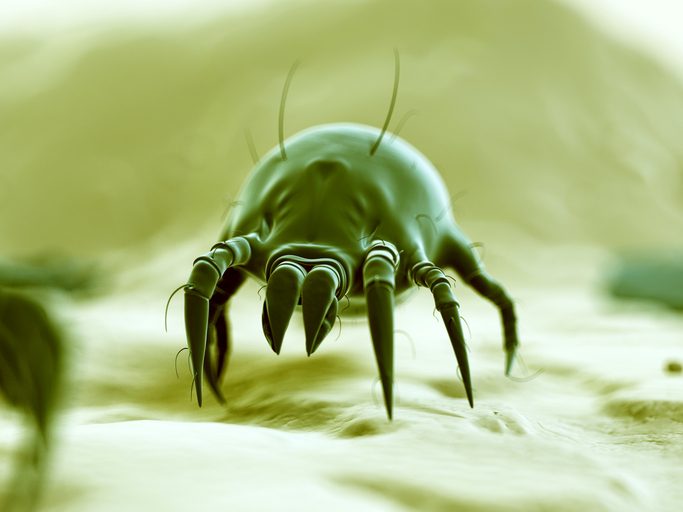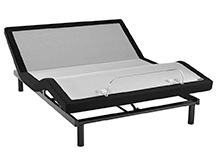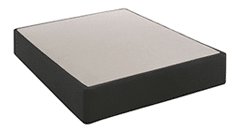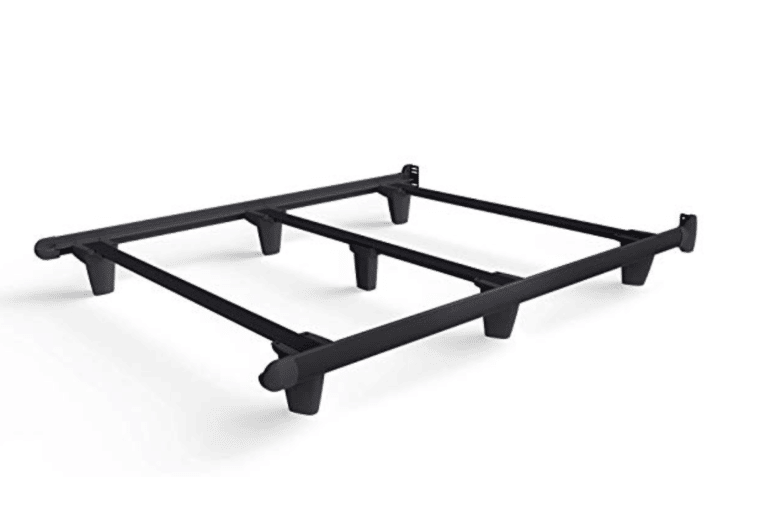
The claim is often made that a mattress doubles in weight after ten years due to the accumulation of dust mites (pictured, left), dead skin cells, dust, sweat and other unpleasant things. Our sleep experts help to reveal whether this claim is an urban myth or based on fact. The truth is not so black and white, but luckily the sleep specialists from Mattress World Northwest are experts on the topic. Here, you can fill in some of the blanks to help you discover more about choosing the right mattress for maximizing hygiene and sleep health.
A lack of research documentation on the topic of a mattress doubling in weight receives much speculation about whether the claim is based on fact or fear tactics.
There is the belief that there are some truths to this claim, but undeniably, some of the information is exaggerated to emphasize the importance of maintaining good hygiene to preserve health and sleep comfortably. Because good sleep quality is a substantial pillar of health, experiencing consistent, well-rounded sleep cycles is critical to survive and thrive, making hygiene surrounding your sleeping surface critical, too.
Sleeping well involves many facets. Maintaining comfort, alignment, support to the spinal curvature, as well as sleep hygiene, like keeping your mattress clean and fresh, are substantial aspects to keep top of the mind. Especially if you have asthma, allergies, or other breathing conditions, keep in mind your particular triggers and potential risk factors for maintaining good hygiene around your sleeping area.
First, before we dive deeper into the debacle about your mattress doubling in weight, let’s go over the types of allergens or other things that can affect your mattress hygiene.
The fact is, dirty mattresses can not only trigger allergies, but they can make you sick.
We all come into close, long-term contact with our mattress every night while sleeping on it. So it helps to assume that you are constantly breathing in air that is no better than the cleanliness of your mattress. If you sleep on an old mattress with stains or haven’t used a mattress protector in a long time, your grungy mattress and allergen-filled air are likely what you’re breathing in, too.
Old mattresses can harbor bacteria and pet dander. Fungus and mold can develop on a mattress in a humid or moist environment. Gross! Especially here in the northwest, with all the condensation and moisture in the air, keeping your mattress dry and clean is strikingly necessary to sleep well and breathe easy, especially if you have asthma, allergies, or other breathing conditions. Unfortunately, without much hygienic awareness or a mattress protector, the cycle revolves: dust mites and their digestive enzymes build up in mattresses because they gravitate toward their primary food sources, like dust and skin cells shed by humans and animals. In the late ‘80s, scientists and medical professionals pinpointed one specific and particularly aggressive digestive enzyme as a major allergen. It is so powerful that the enzyme can abolish cells and halt the human body’s immune defense system. Peptidase 1 or Dep 1, the enzyme secreted by dust mites, is now commonly known to trigger allergic rhinitis, an immune system reaction that causes more intense symptoms of an allergic reaction.

Your mattress acts sort of like a sponge, absorbing and accumulating ‘things’ over time. Dust mites especially love old mattresses because they have an accumulating source to feed from. Dust mites are physically incapable of ingesting any source of hydration, so it is no surprise that they thrive in humid areas because they absorb moisture from the air to survive instead. They gravitate toward humidity and moisture from sweat, and often dust mites perish below 50% relative humidity.
Humans shed about half a billion skin cells daily and secrete oils from our skin every day. And according to WebMD, the average adult sweats 26 gallons per year at night. That sounds like too much moisture for your mattress to handle! So, without a good quality mattress protector, you’re really creating a stockpile for those pesky dust mites to thrive in! And so, the cycle continues: clean surfaces like your mattress become dusty, and dust mites are attracted, leading to a lack of hygiene and an irritant-filled mattress that is entirely unsuitable for asthma or allergy sufferers.
With the excess of literally billions of microscopic dust and dust-related particles to maintain, keeping up with your mattress’s hygiene and cleaning schedule may feel like a constant grind. But, keeping in mind the importance of your sleep health, you’ll do your best. Some good hygiene practices are better than none, and keeping bacteria and allergens at bay is worth it.
It is good to be aware of dust mites, as about 20 million Americans are allergic to them. But, if you’re easily alarmed, please take notice – but don’t pay particularly close attention to – these facts about dust mites. They are:
In the spring of 2015, popular Facebook user and Star Trek alum George Takei published a post that linked to a list of shocking “facts.” The link featured a captioned photograph stating that the weight of mattresses doubles every 10 years, a claim attributed (several links later) to the “accumulation of dust mites and dust mite droppings.”
While the viral spread of that rumor introduced the claim to many Facebook users, this belief is far from new: posts about bedding doubling in weight over a 10-year period have been circulating on the Internet since at least as far back as 2000.
An article published in the Wall Street Journal (WSJ) in February of 2000 may have been the most damning source of information:
“Dust mites thrive in plush carpets, overstuffed upholstery and cushy bed comforters. One frightening statistic: The average mattress will double its weight in 10 years as a result of being filled with dead dust mites and their detritus. Facts like these can send even the most skeptical consumer running for the dust mop. ‘You see a picture of these bugs, and it’s not pretty,’ says Stephen Wasserman, past president of the American Academy of Allergy, Asthma and Immunology. ‘But if you’re not allergic to them, I don’t think your environment will be dramatically different if you kill them.’”
Any individual allergic to dust mites or their detritus knows the all-too-real impact of such a sensitivity. But do mattresses truly double in weight over ten years? Furthermore, does the increase ever stop, or do really old mattresses become heavier over the decades? Furthermore, does the increase ever stop, or do exceptionally old mattresses become heavier after being handed down and slept on by multiple sleepers over several decades?
The mattress claim was questioned when it initially appeared in 2000. However, the follow-up fact-checking of the story failed, allowing the attention-getting, original story to continue gaining traction as being valid. A couple of months after the WSJ article was published, Ohio State University researcher Emmett Glass, who was quoted in the piece, explained:
“I never quoted that statistic. I told [the reporter] that Internet web sites have statistics that try to strike fear in the consumer, thus promoting their products. I gave her a few off the top of my head (two million mites in an average mattress, mattress doubling in weight, etc.) that I read over the years. She asked me if any of these statistics have any scientific merit and I told her that none of them are in the literature. To the layman that is NO! In fact I asked the Wall Street Journal writer to call an expert on mattresses at the internal sleep products association. She did and was told that the statistic on mattresses doubling in weight was far from the truth. The journalist chose to include it in the story anyway. She liked the statistic because it made her story more interesting.’”
In conclusion, no credible or otherwise evidence seemed to support the mattress weight claim. Since the WSJ article seemed to drive home what was once a sales pitch for mattresses, it’s difficult to say precisely how the claim originated.
Though the inflated statistic that a mattress doubles in weight in 10 years may have been an exaggeration, the fact that dust mites accumulate on soft, porous surfaces is not. In fact, they do so because they feed off skin cells and sweat, causing dust mites to gravitate toward those with a buildup of said cells and moisture, like your pillows or mattress. Household dust mites don’t usually end up doubling up the weight of your mattress, but they do cause a significant buildup of allergens that can cause the mattress to become slightly heavier. And, without a mattress protector, it gets dirtier over time, too.
Dust and dust mites buildup inside a mattress over ten years or more can severely trigger allergies, induce allergic rhinitis, or introduce a chain reaction of new allergies.
Even worse, more dust mites or mold can become present and more likely if you live in a humid or damp environment. That’s not to say that dust mites and mold play a role with each other, but more so to emphasize that your mattress is like a sponge that absorbs excess humidity and moisture. Without a good-quality mattress protector, body oils and build up of sweat in the mattress are unavoidable. Humidity and moisture accumulation is helpful for dust mites to survive. But, surrounding your sleeping surface, moist air is a major hindrance to people with eczema, asthma, or allergies.
Sleep specialists at Mattress World Northwest will confirm: any way you look at it, dirty mattresses can leave you ‘muddling through allergies’ or, even worse, make you itchy, sick, or worsen breathing conditions like asthma. Look for certifications like Certi-Pur, OekoTex STANDARD 100, and GreenGuard Gold to start off with an allergy and asthma-friendly mattress. A clean mattress is essential to avoid sleep disruptions, as you spend a third of your life asleep on it or trying to be.
Keeping a sleeping surface free from dust and allergens plays a significant role in symptom management for those with dermatitis or allergic or atopic dermatitis, more commonly known as eczema. For those with skin sensitivities and allergies, it’s essential to remember that our skin, the largest body organ, comes in close quarters to your mattress surfaces for long periods. So, that being said, for anyone, but especially those with skin sensitivity, asthma, or allergies, preserving proper hygiene is essential for your overall health and wellness, including a helpful sidekick to boost your sleep quality.

Experts Recommend a Mattress Protector and Vacuum to Maintain Good Hygiene
Using a waterproof, breathable pillow and mattress protective cover will keep your mattress hypoallergenic and fresh to ensure your mattress stays significantly more clean. You can even wash the mattress protector and repeat often versus lugging out the vacuum cleaner to suction out the dust.
Even though it may seem like an odd chore in this modern world, WebMD, Consumer Reports, and Better Home and Gardens still advise routinely vacuuming your mattress. The cleaning experts, The Maids, also recommend vacuuming your mattress with HEPA filtration as a best practice to clean for the good of your health. Still, it is suggested that you use a mattress protector and wash the bedding weekly.
Lifestyle magazine Better Homes & Gardens mentions using a high-performance mattress vacuum specifically for the mattress or other surfaces like pillows, couches, or futons. Designating a special mattress vacuum to clean only surfaces other than the floor is a savvy way to maintain your home. Everyone should consider good hygiene practices like this to keep your furniture, mattresses, and pillows fresh and clean, especially if you have dust or dust mite allergies, asthma, or skin sensitivities.
Even though possible, your mattress is far more likely to require replacement due to wear and tear than added weight from dust mites and debris. Still, upgrading your mattress is an easy but significant lifestyle change. Now, you may be wondering what the best mattress for allergies is.
Mattress World Northwest has multiple locations around Portland, offering an extensive collection of premium beds at competitive prices, including memory foam, latex, hybrid, and pillow top mattresses. Dense memory foam, TempurAdapt material, and hypoallergenic latex mattresses are particularly beneficial for allergy-prone people because allergens have difficulty harboring or are detracted from these materials altogether.
Mattress World Northwest is delighted to share our expertise surrounding sleep health and hygiene with a customized selection process and customer-focused service. Your satisfaction is our main concern!
Mattress World Northwest maintains a low price and comfort guarantee to satisfy even the most savvy shoppers. Visit our online shop or a specialty sleep shop location in your neighborhood, and you’ll be pleased to discover that all 25 Mattress World Northwest stores offer free local delivery and removal of your old mattress, too!
So, for starters, don’t wait too long to replace your old one! According to the Better Sleep Council, “A mattress is like an old armchair or pair of shoes. They feel comfortable and fit your body even though the chair’s foam and springs may be worn or the shoes have lost all arch support. It isn’t always obvious that a mattress has outlived its lifespan just by looking at it.”
Especially if you happen to have allergies, asthma, or eczema, if you’re having symptoms and feel triggered by allergies, your mattress could be the ‘invisible cause’ of those symptoms. Allergens inside and on top of your sleeping surface cause unwanted reactions and unnecessary sleep disruptions.
So, if you’re still sleeping on that potentially dusty, old mattress, don’t be one of the many that take three years too long to replace it, especially if your genetic tendency is to be allergy-prone with skin sensitivities.
If your breathing restrictions feel activated lately or your allergies are triggered but you can’t figure it out, start by examining your mattress, bedding, and all soft, upholstered surfaces. Identify any hygienic issues, and if you don’t yet utilize a mattress protector, start there. Still, with a brand new hypoallergenic mattress, pillow, and protector from Mattress World Northwest, you’ll undoubtedly sleep better knowing you made a savvy investment in your sleep health, hygiene and your overall quality of life.
Updated 10/2/2024
« What Is the Best Time to Go to Sleep? | Does Lack of Sleep Really Cause Bags Under the Eyes? »
While you can't go wrong with any of our mattresses, here are a few factors you'll want to consider before making a purchase: your sleep position (and if you have a partner, theirs as well), the size of the space, and a price point. If you have any questions, rest easy knowing that our team is happy to help you find that perfect fit.
| Size | Dimensions |
|---|---|
| Twin | 38″ wide x 75″ long x 9.25″ tall |
| Twin XL | 38″ wide x 80″ long x 9.25″ tall |
| Full | 54″ wide x 75″ long x 9.25″ tall |
| Queen | 60″ wide x 80″ long x 9.25″ tall |
| King | 76″ wide x 80″ long x 9.25″ tall |
| Cal King | 72″ wide x 84″ long x 9.25″ tall |
| Split King (2pk) | 38″ wide x 80″ long x 9.25″ tall |
Mattress World Northwest makes it easy to choose the right foundation for your space and lifestyle.



Reliable support for your boxspring and mattress.
